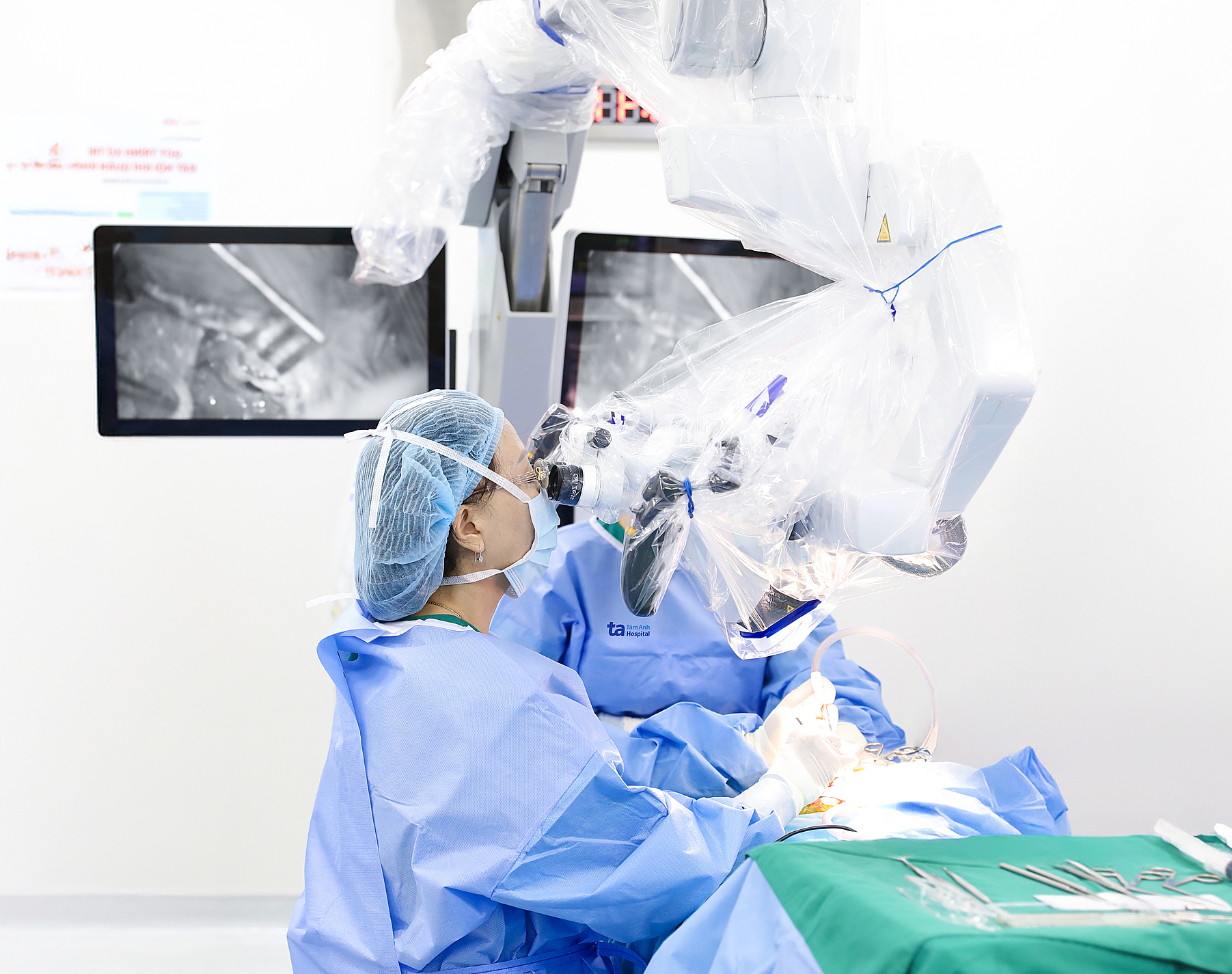Hanh, a Vietnamese-American, experienced hearing loss at the age of 10, before moving to the US and after developing language skills. The cost of a cochlear implant in the US, estimated at 150,000 USD, was prohibitive without insurance coverage. She traveled to Tam Anh General Hospital in Ho Chi Minh City, Vietnam, where the procedure cost about one-third the US price.
Audiograms revealed profound hearing loss in her right ear and moderate-to-severe mixed hearing loss in her left. Her temporal bone, brain morphology, and brain tissue signals showed no abnormalities. Professor Doctor Tran Phan Chung Thuy, Director of the ENT Center, diagnosed Hanh with profound hearing loss and recommended a cochlear implant.
Hanh returned to the US and corresponded with Professor Thuy about the procedure, costs, and potential recovery. When she was ready, she returned to Vietnam for the surgery this past summer.
Professor Thuy used an AI-assisted surgical microscope to place a multi-channel electrode into Hanh's cochlea. The team checked electrode impedance and measured auditory nerve responses. All 22 internal electrodes successfully received signals from the external processor, showing stable nerve responses. Hanh's postoperative recovery was smooth and uneventful.
 |
Professor Thuy (seated) performing Hanh's cochlear implant surgery. Photo: Tam Anh General Hospital |
Professor Thuy (seated) performing Hanh's cochlear implant surgery. Photo: Tam Anh General Hospital
One month later, Hanh received the external sound processor and the device was activated. She showed excellent auditory nerve responses, perceiving sounds from subtle cues to loud clapping. She is now undergoing specialized therapy to differentiate and identify sounds perceived through the implant.
"Because the patient already had language skills and could hear and understand with hearing aids, her post-implant language acquisition is faster and easier," the doctor said. Hanh estimated the total cost, including the device, travel, and living expenses in Vietnam, to be under 37,000 USD.
Cochlear implants transmit coded electronic signals, not sound waves like a healthy ear. A microphone captures and encodes sound, which is then transmitted to the implanted component. The implant decodes the signals and sends them to electrodes that stimulate the auditory nerve. The brain interprets these signals as sound. Each electrode handles different sound frequencies, requiring training for the brain to adapt, decode, and distinguish sounds.
The US Food and Drug Administration (FDA) approved cochlear implant technology in the 1980s, and it has been widely used globally since 1990. Professor Thuy, former director of Ho Chi Minh City ENT Hospital, explained that Vietnam adopted the technology in 1998, performing its first implant at the Ho Chi Minh City ENT Hospital. Over 20 years since that first procedure, Vietnam now uses advanced, internationally standardized techniques and equipment from major manufacturers, comparable to those in leading medical centers worldwide. Post-surgery auditory rehabilitation, device programming, and speech therapy have also advanced.
Uyen Trinh
| Readers can submit questions about ENT issues here for doctor's responses. |












